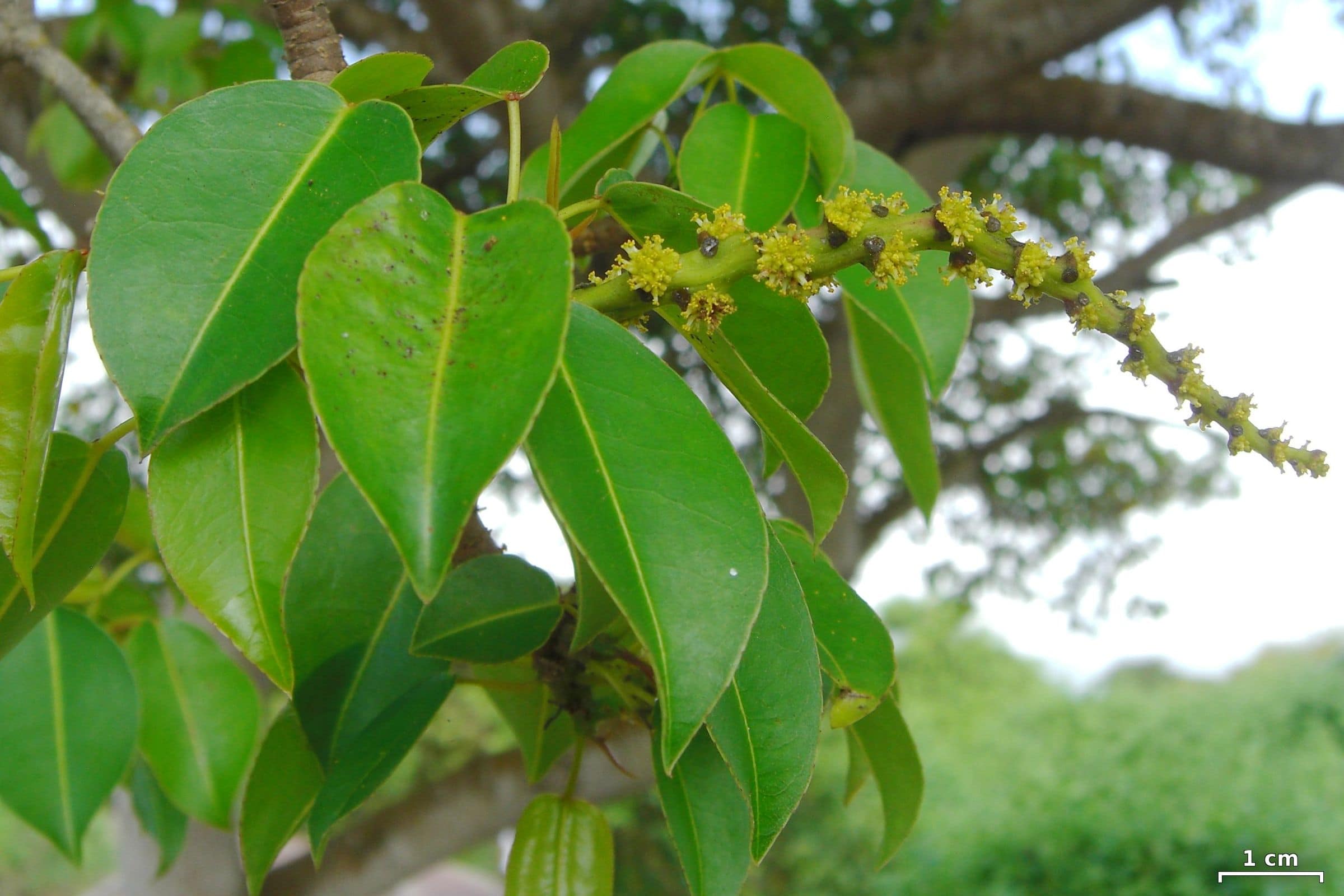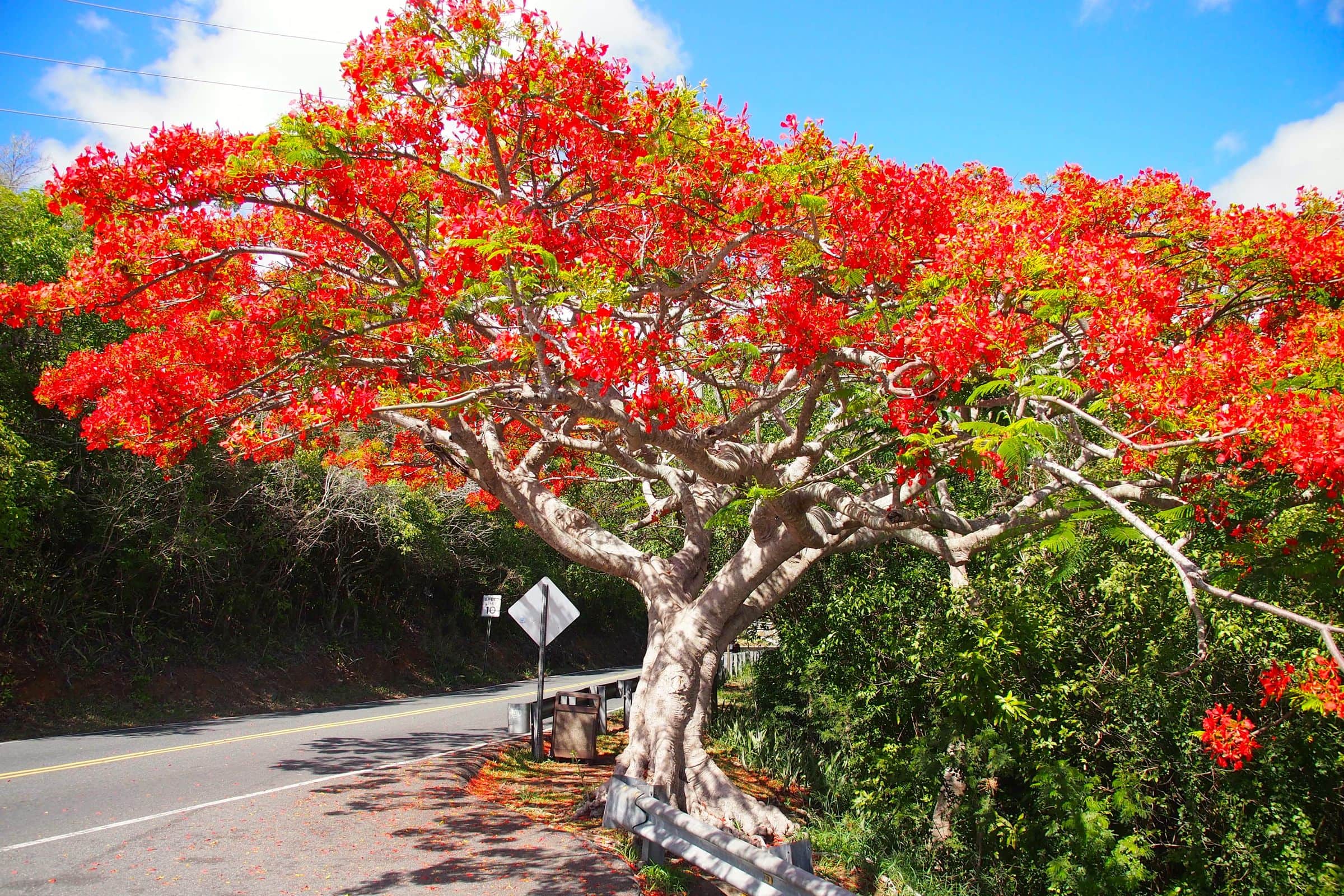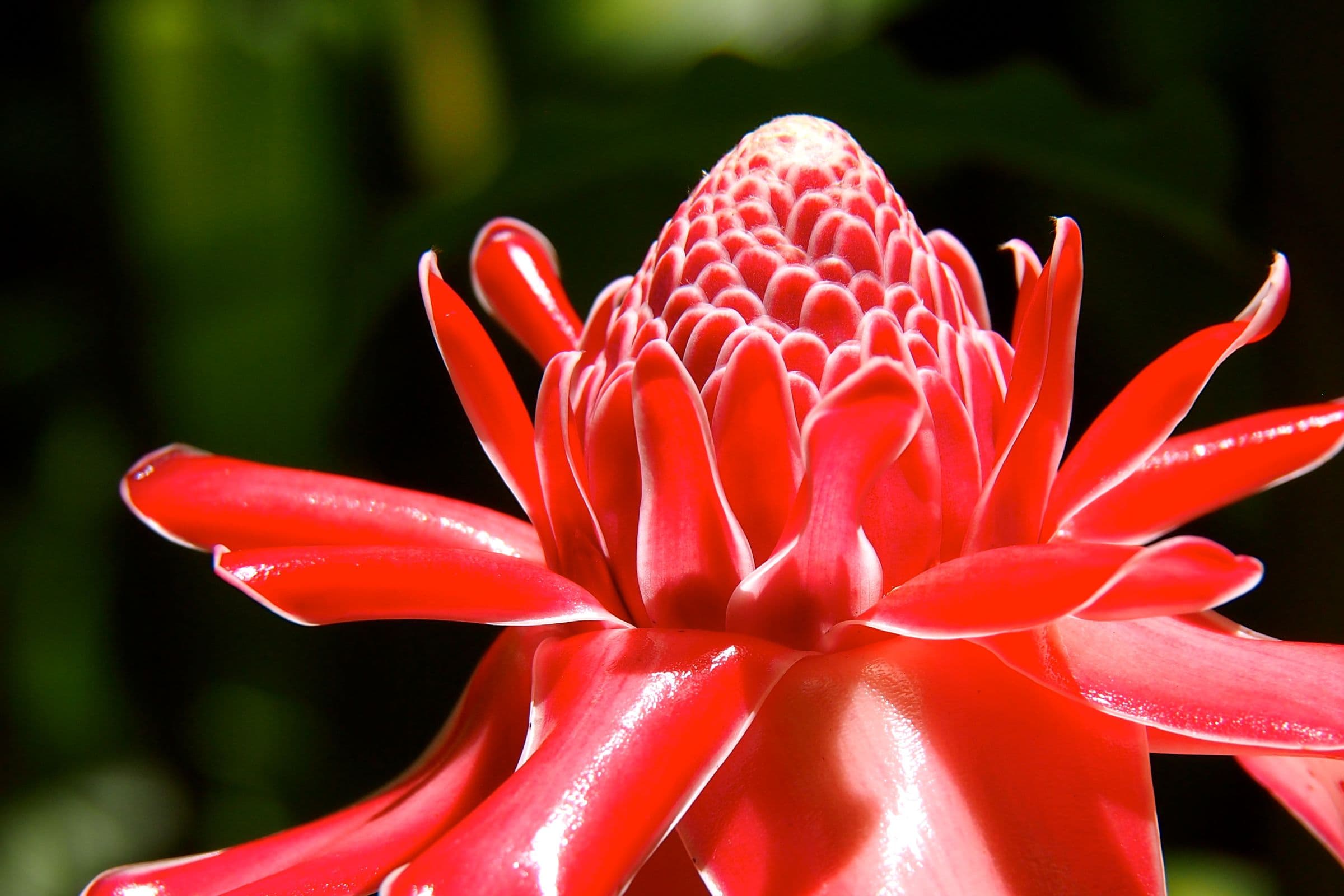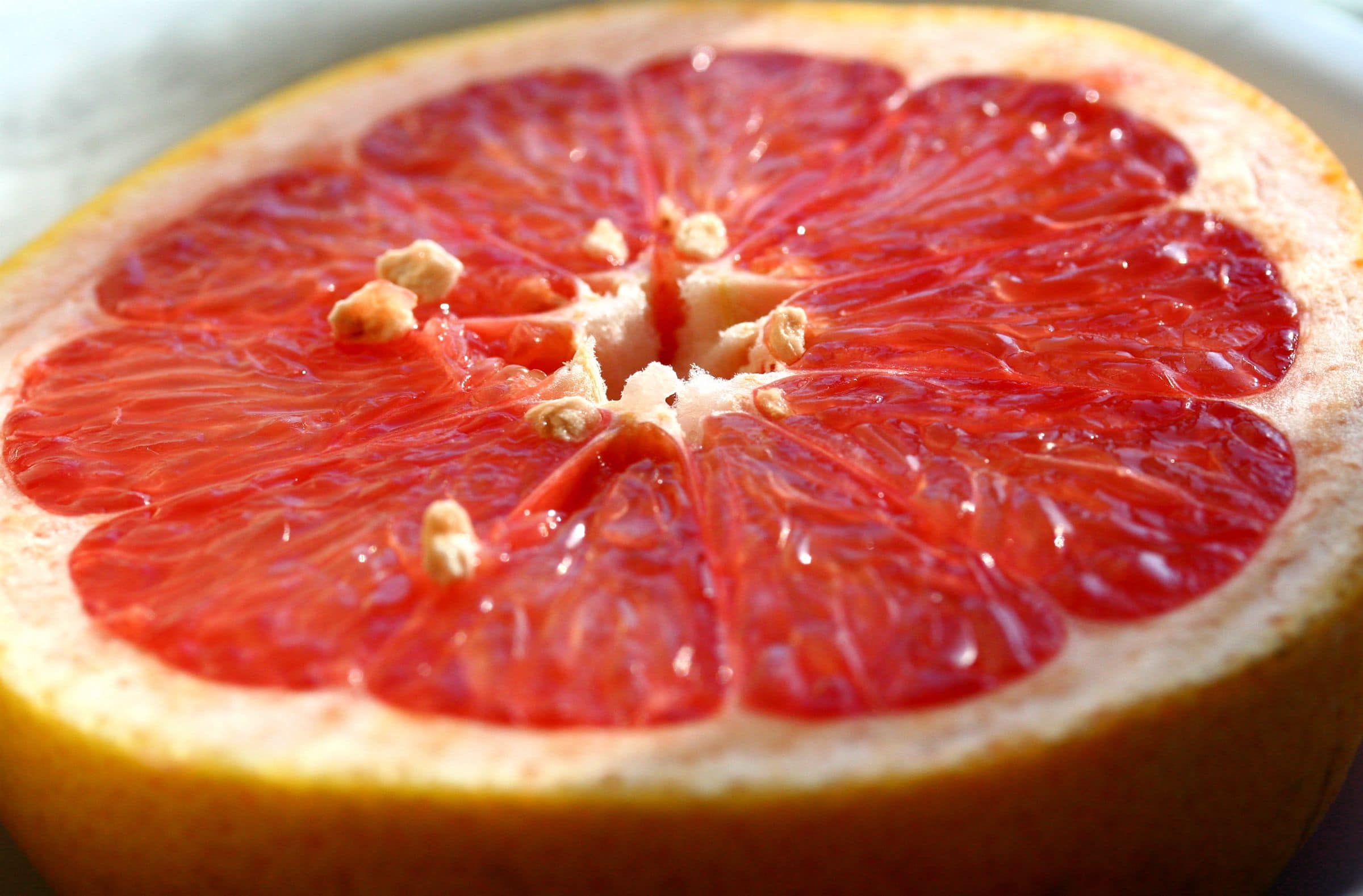Manchineel: One Caribbean Travel Danger You’re Likely to Face
Crime, mosquito-borne viruses, earthquakes, sharks… Many are the Caribbean travel dangers we’re warned to be wary of prior to visiting the tropics. Millions enjoy the Caribbean each year without falling prey to any of these ills, of course. At the same time, though, there is one particular peril you’d be hard-pressed to miss in our islands – the malevolent manchineel.
Native to tropical areas of North and South America, manchineel trees can be found in every corner of the Caribbean. They thrive along the shore, mixed in with the coconut palms and sea grape trees that line many of our best beaches.
Not All Bad
As Caribbean travel dangers go, these trees aren’t all bad. In fact, they play a very beneficial role in maintaining the beauty of our beaches.
Manchineel roots help to guard against beach erosion. Their bright green foliage also make our picture-perfect coastlines just a bit more so.
Okay, They’re REALLY Bad
In the case of this tree, though, good looks and deeds most definitely deceive.
Every inch of these trees is seriously toxic. So much so, in fact, that Kalinago Indians used to dip the tips of their arrows in the white sap secreted by the manchineel to ensure a fatal blow to their enemies.
Beware Manchineel When it Rains
Poisoned arrows are not a worry these days, of course. Manchineel trees, though, still pose major dangers, particularly when the skies open up.
Stand under a one when it rains and you’ll end up with painful blisters over any exposed parts of your body!
So, how will you know to avoid manchineel trees?
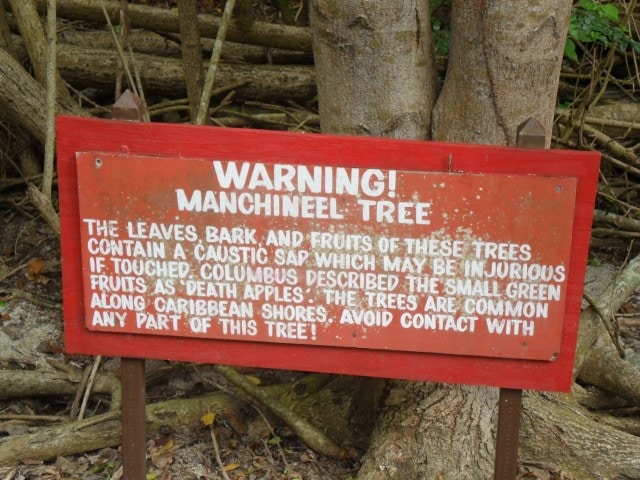
How to Keep Safe from Manchineel Trees
Well, on most islands they’re marked. Sometimes you’ll see a warning sign like the one above. Other times, you might find painted markings of some kind; usually a red “X” or red band extending around the truck of the tree.
If there’s any doubt, though, best to find some man-made shelter, or just get wet. After all, a little rain never hurt nobody…
Unless that body was standing under a manchineel tree.
*Lead photo credit: Flickr user Jason Hollinger.
